Can onions and garlic be planted side by side and how to do it?
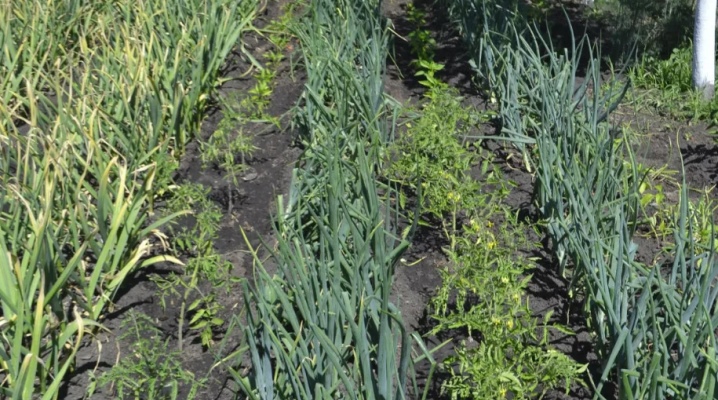
When planting any crops on your site, it is important to take into account the rules of crop rotation. If the plants that are planted in the neighborhood will get along well with each other, this will have a positive effect on their fruiting. In the article, we will consider whether it is possible to plant onions and garlic side by side, and how to do it.
Cultural compatibility
Both cultures belong to the same family. Therefore, it is not recommended to plant them in the same area. If the garden in which the garlic and onion are grown is large enough, it is better to place these plants far from each other. In a small area, they may well grow together. Such a neighborhood will not harm either onions or garlic.
These plants thrive in light soils. They react poorly to excess and lack of moisture. In the first case, the plants begin to hurt, in the second, they dry out and bear fruit very badly. It is not recommended to plant onions and garlic in acidic soil. This leads to infection of plants with downy mildew. To avoid this, the soil is deoxidized before planting using wood ash or lime.
Onions and garlic are equally fond of well-lit places. If the plants get enough sunlight, they thrive very well. But you should not expect the appearance of large fruits on the site. Usually, plants are grown in such conditions in order to always have fresh herbs on hand. With proper care, it can be cut from the bushes several times per season.
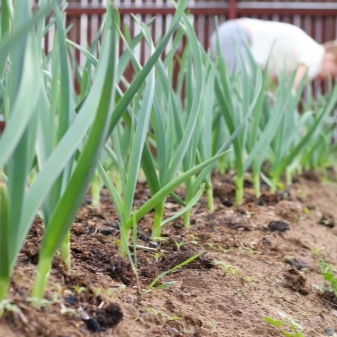
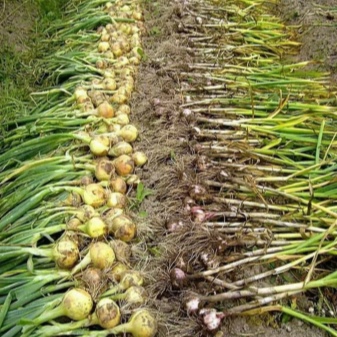
Landing technology
In order for plants to grow quickly and develop well, they need to be planted, adhering to certain rules.
-
Choosing a place. First of all, it is important to choose a site where these crops will grow. Onions are best planted where cucumbers, cabbage or radishes used to grow. It is better to plant garlic after potatoes or beets. The soil on which the beds will be located should be fertile and not too soft. Otherwise, the garlic will be too deep underground. This will negatively affect the condition of the crop.
-
Site preparation. To disinfect the beds, the soil is treated with a solution of copper sulfate or potassium permanganate before planting plants. The correct feeding of the beds also plays an important role. For this, potash-phosphorus fertilizers are usually used. But fresh organic matter is not recommended to be introduced into the soil. Thus, a person will only harm the plants.
-
Selection of quality planting material. When planting onions and garlic in the same garden, it is important that these plants are strong enough. To do this, choose healthy seeds that are free of mold or rot.
-
The choice of the rest of the neighbors. Strawberries can be planted in the same bed with onions and garlic. Tomatoes and various salads will grow well nearby. But legumes should not be planted in the area with amaryllis. This will lead to a drop in yield and infection of the site with various diseases. Many gardeners plant flowers such as asters, gladioli or roses on the border with the beds. This neighborhood has a great effect on the condition of the plants. They protect each other from pests and various infections. You can plant flowers not only on the border with the ridge, but also between individual bushes.
-
Disinfection of planting material. To avoid most diseases, garlic and onions must be dried well before planting, and then placed in a light solution of potassium permanganate for 2-3 hours. Instead, they can be treated with a light solution of copper sulfate.A small amount of wood ash can be added to the grooves before planting the plants.
It is worth using clean ash obtained after burning plant residues. This product will help to disinfect the area, as well as protect the plants from pests.


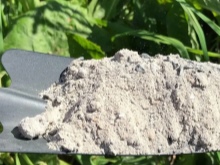
You need to plant onions next to garlic in the right way. Usually the rows alternate. The distance between them must be at least 20 centimeters. This is to ensure that some plants do not shade others. Onions and garlic can also be staggered. This planting scheme is popular among many gardeners.
You need to plant vegetables at a shallow depth. If you place them too deep, you will have to wait a very long time for the first shoots to appear. When planting, the cloves should not be pressed into the soil too much. This can damage the roots.
If onions and garlic are planted before winter, the beds should be placed on a hill. In this case, in the spring, during the melting of the snow, the roots will not be flooded. A couple of days before the onset of frost, the site needs to be covered with mulch. For plant protection, clean, dry foliage, humus or branches are usually used. When snow falls on the site, you should not remove it from the site. It will serve as a kind of "blanket" that protects plants from frost.
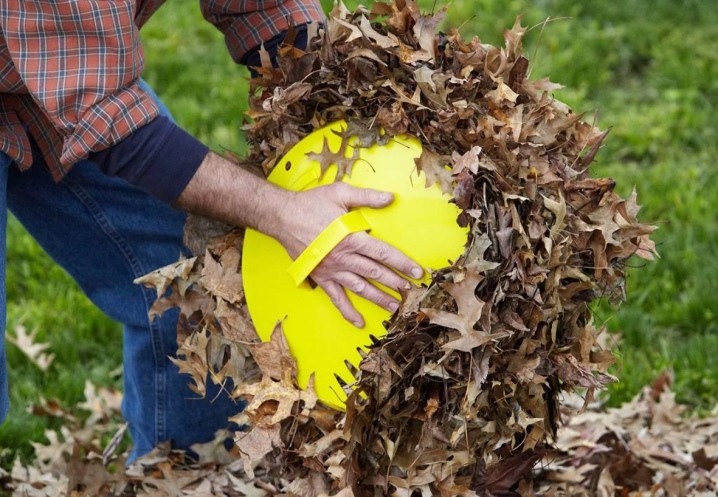
Care Tips
Both garlic and onions are considered to be quite unpretentious plants. Therefore, it takes little time to care for them. To improve the condition of plants, you need to regularly carry out the following agrotechnical measures.
-
Loosening. Onions and garlic love loose soil. Therefore, it is recommended to constantly loosen it. Otherwise, it will be too dense. Loosening also helps protect plants from weeds. This is only good for them, because if garlic grows next to onions, it already lacks nutrients.
-
Watering. These plants do not like highly moist soil. In such conditions, they often get sick and grow very slowly. Therefore, it is worth watering onions and garlic only if the soil on the site is very dry. This usually happens in hot summers. For this, warm and well-settled water is used. If the vegetables were planted before winter, they definitely will not need watering. In the spring, the melted snow will provide the plants with the necessary moisture.
-
Protection from disease. For garlic and onions, the same diseases are dangerous. Therefore, when planting these plants nearby, you need to pay special attention to caring for the site. Most often, they suffer from diseases such as white or black rot, as well as peronosporosis. To protect the site from these diseases, planting material is always disinfected. But if the site was still infected with one of these diseases, the beds should be treated with high-quality fungicides. Bushes that are too affected are recommended to be removed from the site.
-
Pest control. To protect the beds from most common pests, gardeners plant marigolds and various herbs between the rows of onions and garlic. This helps repel insects. In autumn, the stems of these plants are embedded in the soil. This procedure has a good effect on the condition of the soil. In addition, digging allows you to get rid of eggs and insect larvae.
If onion flies, weevils or other dangerous pests appear on the site, it is treated with a solution prepared on the basis of laundry soap. A large number of insects have to be dealt with using insecticides.
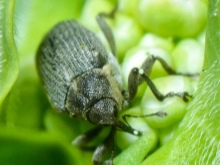


Once every 2-3 years, the location of these plants must be changed. After onions and garlic, it is best to sow green manures in the area. This is the fastest way to restore soil and make it more nutritious. It is possible to plant onions and garlic in the previous place of growth no earlier than 5 years after they are harvested. Only in this case will they bear fruit well.
To summarize, onion and garlic are quite compatible.But in order to get a good harvest and prevent the death of plants, it is still recommended to plant them in different areas, or at least leave a large distance between individual rows. If you adhere to this rule and take good care of the bushes, there will be no problems with growing amaryllis.
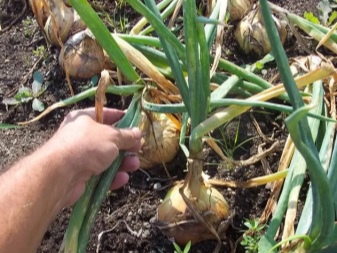
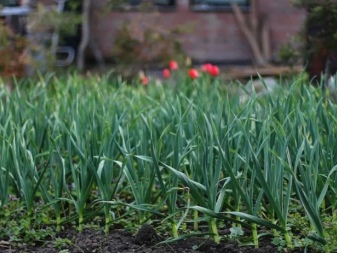













The comment was sent successfully.